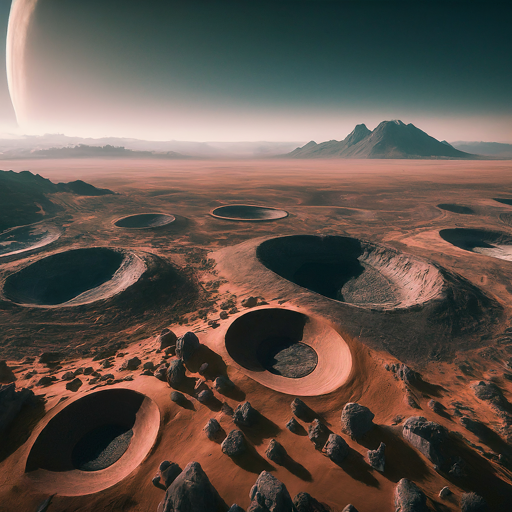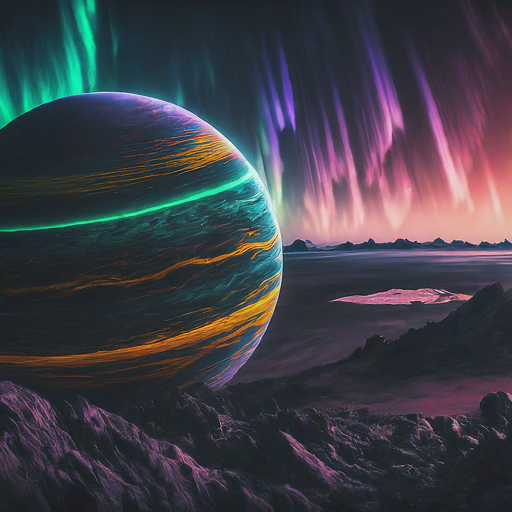As you gaze at the night sky, you can’t help but wonder about the mysteries that lie beyond our solar system. Trillions of stars, planets, asteroids, comets and more fill the cosmos, with new discoveries happening all the time. One such phenomenon that has recently come to light is rogue planets, the nomads of our galaxy. Numbering in the billions, these isolated worlds freely drift through the void of space, untethered to any star. In this article, you’ll learn all about these lonely vagabonds – how they form, the dangers they face in the harsh environment of space, whether any could potentially harbor life, and what their discovery means for our understanding of planetary formation and evolution throughout the universe. Read on to explore the wild, untamed frontier of a rogue planet.
Rogue Planet: The Mysterious Wanderers of the Galaxy
Rogue planets, also known as free-floating planets, are worlds that drift through interstellar space unbound to a star. Unlike the planets in our solar system that orbit the sun, rogue planets travel alone in the inky blackness of the galaxy. Scientists theorize there could be billions of rogue planets adrift in the Milky Way.
Detection and Discovery
Rogue planets are difficult to detect since they do not emit their own light and are not close to a bright star. However, astronomers have discovered rogue planets using a technique called gravitational microlensing. When a rogue planet passes in front of a distant star, its gravity acts as a lens, bending and magnifying the light from the star. By observing changes in the star’s brightness, astronomers can detect the planet and calculate its mass. The most common rogue planets detected are between the mass of Mars and Jupiter.
Questions and Mysteries
The existence of rogue planets raises many questions about how they form and survive in interstellar space. Did they get ejected from solar systems, or did they never form around a star in the first place? How do they retain internal heat without the warmth of a star? Future study of rogue planets will provide insights into planet formation and evolution. Missions like Nancy Grace Roman Space Telescope and the European Space Agency’s PLATO mission could help detect and analyze more of these galactic nomads.
Rogue planet remain shrouded in mystery, wandering the inky blackness of space untethered to the warmth and light of a star. As we continue to explore the universe, these lonely worlds may reveal secrets about how planets emerge and survive in the harsh conditions of interstellar space. Their discovery reminds us that there is still so much to uncover about the workings of the cosmos and our place within it.
The Discovery and Study of Rogue Planets
Rogue planets, also known as free-floating planets, are worlds that wander the galaxy unbound to a star. They are challenging to detect due to their isolation, but scientists have employed creative techniques to uncover these nomadic worlds.
Gravitational Microlensing
When a rogue planet passes between Earth and a distant star, its gravity can bend and magnify the starlight, causing a temporary brightening of the star. By monitoring millions of stars, scientists detect these microlensing events and can infer the presence of rogue planets from their effects. This method suggests rogue planets may outnumber stars in the Milky Way.
Direct Imaging
Powerful new telescopes and instruments can directly capture infrared light from rogue planets. The Gemini Planet Imager and Very Large Telescope have imaged a handful of rogue planets in this way. Direct imaging is challenging but provides details about a planet’s temperature, composition and other properties.
Future Studies
The upcoming James Webb Space Telescope and next-generation ground-based telescopes will enable more direct imaging and study of rogue planets. Space-based infrared telescopes planned for the 2030s may detect rogue planets through occultations – when a planet passes in front of a distant star and blocks some of its light.
Studying rogue planets provides insights into planet formation and evolution apart from the effects of a star. These nomadic worlds may also hint at the prevalence of interstellar objects wandering between stars. Continued observations of rogue planets will reveal more details about these denizens of the dark, expanding our understanding of worlds that forge their own path through the galaxy.


The Potential Origins and Futures of These Galactic Nomads
Formation and Ejection
Rogue celestial bodies are worlds that wander the galaxy unbound to a star. They are thought to form in protoplanetary disks around young stars, just like regular exoplanets. However, they are ejected from these systems early on through gravitational interactions with other massive bodies before they can become firmly enmeshed in the star’s gravitational hold.
These interactions could include close encounters with other planets that perturb the planet’s orbit and fling it out into interstellar space. They may also be caused by gravitational tugs from companion stars in binary or trinary star systems. Some rogue planets could even be remnants of solar systems that underwent catastrophic disruptions, with the star itself destroyed in a supernova explosion.
A Lonely Existence
Once ejected into the inky blackness of intergalactic space, rogue planets lead a lonely existence. Without the warmth of a star, their surfaces would be frigid wastelands. However, internal heat from their formation and the radioactive decay of elements in their cores could sustain subsurface oceans and power geological activity and atmospheres for billions of years.
Some rogue planets may retain moons or even capture new ones after ejection. Their moons could provide tidal heating and help maintain liquid water and atmospheres. The rogue celestial body may also generate its own magnetic fields to shield against radiation and solar wind in interstellar space. Despite their solitary wanderings, these nomads of the galaxy could host fascinating forms of life in subsurface habitats warmed by geothermal and tidal processes.
The cosmos may contain billions of rogue celestial bodies adrift between the stars. Future space telescopes could detect them through microlensing and study their characteristics. Perhaps one day, interstellar spacecraft will pay them a visit, revealing their secrets and confirming whether or not we are alone in the universe. Though cast out from their starry kingdoms, rogue planets remain mysterious worlds waiting to be explored in the galactic wilderness.
Conclusion
As we have explored, rogue celestial bodies occupy a fascinating niche in our galactic neighborhood. While they do not orbit stars as conventional planets do, these wandering worlds are more common than previously thought. Their mysteries compel us to train more powerful telescopes on the void between stars, so that we may better understand the abundance, origins, and properties of rogue planets. Perhaps one day we will even visit these nomadic worlds. Until then, keep gazing upward on clear nights – any points of light drifting against the familiar constellations could be rogue planet plying the currents of interstellar space.

